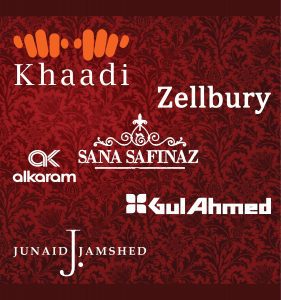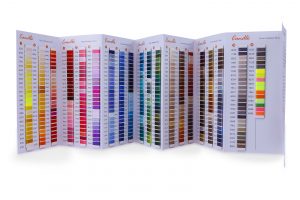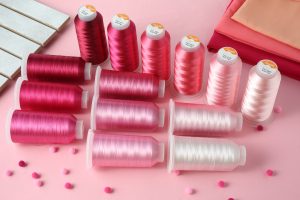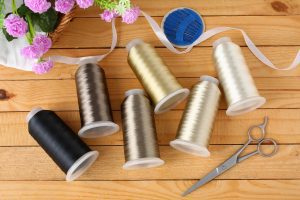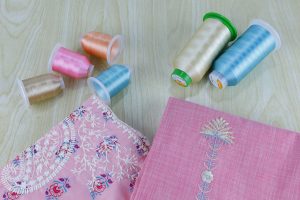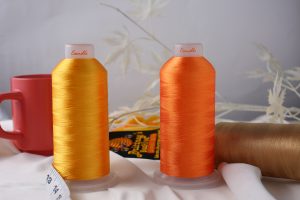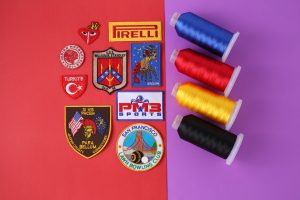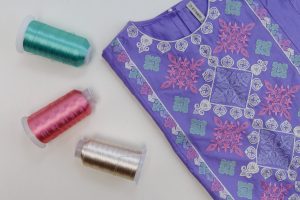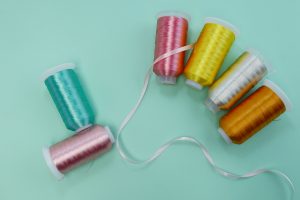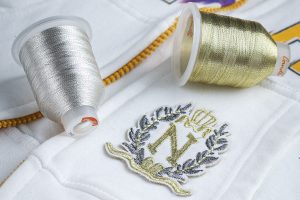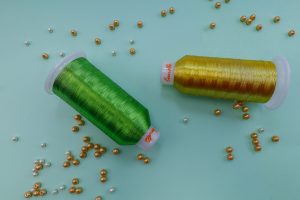Importance Of Machine Embroidery Thread
Imagine you choose the wrong type of thread, and your whole design is ruined. What will you do?
As a beginner in the embroidery field, you should be very careful about the thread type you buy and choose for the embroidery design you intend to create. Every fabric has its texture, and the type of thread differs according to the surface of the fabric. Which is why it is essential to have a clear understanding on how to buy the correct thread according to the type of fabric. One of the initial challenges you will face, when starting off your embroidery journey, is choosing the right thread. To help you pick the appropriate thread, consider the following primary factors:
Cheap Thread Or High-Quality Thread
As a beginner in machine embroidery, it is essential to have accurate information about the thread type and its use. If you settle for a cheap quality of thread, the embroidery will not go in the right direction. To achieve the perfect design, you need to use high-quality embroidery thread because using poor quality and unsuitable thread results in fraying, breakage, and imperfect stitches.
You must use high-quality thread for machine embroidery because it contains durability, strength, and excellent performance. High quality doesn’t always have to be expensive; some threads are also affordable but provide high-quality product, and prove to be an all-rounder.The Candle thread is a typical example and is considered the best quality of yarn, with excellent durability, and strength. This thread is affordable, and many famous brands such as Zellbury, Bonanza, Gul Ahmed, J. and Sana Safinaz are consumer of this thread.
Thread Weight
The most important thing to keep in mind while buying the embroidery thread is the weight. The weight of embroidery threads comes in various ranges. The most common range of yarn are in the range of 40wt to 60wt. As you increase the scale of the thread weight, the thread line becomes thinner.
To do regular embroidery and to make a perfect design, 40 weight is considered the appropriate weight. Whereas, if you want to do small lettering, you can go for the 60-weight thread. It is much thinner; hence pleasing results will be achieved while using 60 weight thread for small designs.
Strength
When choosing your thread, you want it to be strong enough to hold long after you have finished the embroidery. Picking the appropriate line enhances durability while creating the desired effects without much struggle. Avoid using old threads as they weaken with time, making them fray and break easily. Invest in high-quality rolls for your project to harness your art and have it last longer.
Color
When deciding on the color tones for your embroidery project, consider the texture you are dealing with. It would also be best if you experiment with kinds of threads and colors to figure out what works best for your project.
To make your work look stylish and attractive to the customers, mix in your tones flawlessly and play with different colors to give an intricate look. To add intricacy, create a shading plan and pick various tints from a similar shading family. You can likewise attempt variegated string for novel projects. A broad scope of tones gives you space to analyze and experiment until you choose what works best for you.
Sheen
The sheen of the thread enhances your work’s ‘wow’ factor. It adds more to the surface and shading measurement. It also functions admirably with trim embroidery plans. The metallic sheen of gold, silver, and copper fits for frivolity on packs and adds perplexing subtleties to your artwork.
Threads Types Based On Fabrics
The basic criteria for deciding on the embroidery thread depends on the type of fabric and the particular design needs. Keep in mind the line for an embroidery design, such as the fabric type on which the method has to be drawn out and the thread’s strength according to the fabric’s sustainability. To deal with different fabric types, various types of thread lines are present, which are very familiar in the market and renowned for their usage.
Cotton Thread
Cotton threads are mostly used to make quilts. When needed to embroider natural threads on the quilts, cotton threads are a great choice for an embroiderer. This is because it is not as tensile and robust as compared to Polyester and Rayon; instead Cotton threads are shiny and strong, and comparatively easier to work with when using the automatic embroidery machine. The weight of 30 to 50 threads is considered best while dealing with Cotton thread embroidery as it provides strength.
Rayon Thread
Rayon threads are of great importance when we deal with high-speed machine embroidery. Rayon threads are composed of 100%viscous Rayon and are the most efficient thread to use while dealing with machine embroidery. It is essential because it contains greater tensile strength, softness, and flexibility, giving a shiny texture.
Embroiderers mostly opt for the Rayon threads as it does not break during embroidery on the fabric. It has a flawless pattern of stitching which makes it unique and less abrasive compared to the polyester thread. Rayon thread is present in size from 30 to 40 in the context of weight. 40wt line is considered to be the most appropriate one. This is why Rayon is primarily preferred by the embroiderers. Rayon contains a shiny appearance which provides an aesthetic look to the design of the embroidery.
Polyester Thread
Polyester thread is considered efficient to use, since its components helps prevent puckering, breaks, and looping while embroidering using a machine. The polyester contains vibrant colors which are resistant to chlorine bleach. This property of polyester helps distinguish it from the other threads, and for this reason, it is mainly used for commercial lines. When starting off, this thread is recommended to use, because it is less expensive and can perform exceptionally.
Candle Hadid is a polyester embroidery thread engineered to achieve excellent luster. Hadid has excellent sheen, strength and abrasion resistance. This thread is suitable for embroidery in commercial and industrial applications. It offers a superior break-free performance on high-speed embroidery machines
Silk Thread
Silk threads are available in the range from 30 to 50wt. While Silk thread offers a luxurious finish and is appealing to the eye, it is considered too expensive and is not readily available. Before buying, you must ask the weight of the silk thread to ascertain your costs and requirement. These threads are appropriate for machine embroidery, especially for embroidering on luxurious fabrics.
Metallic Thread
Metallic threads are formed by using metal foil that encloses the center core. This thread is not easy to handle, as compared to Rayon and Cotton. This is why metallic threads are more often used in luxurious clothing as it is costly due to its expensive manufacturing.
Can I Use Regular Thread On The Embroidery Machine?
Yes, you can use regular thread, but the problem is that regular yarn is a little thicker and may pile upon as you embroider. In other words, you may get more coverage with standard thread than you would with regular embroidery varieties.
Conclusion
Choosing a suitable thread for the fabric can be daunting to begin with, and this task can be executed properly only if you have enough knowledge about the types of threads and their relationship with the material. Many of the threads are available in the market, but each thread is associated with its particular fabric type.
